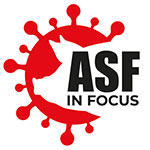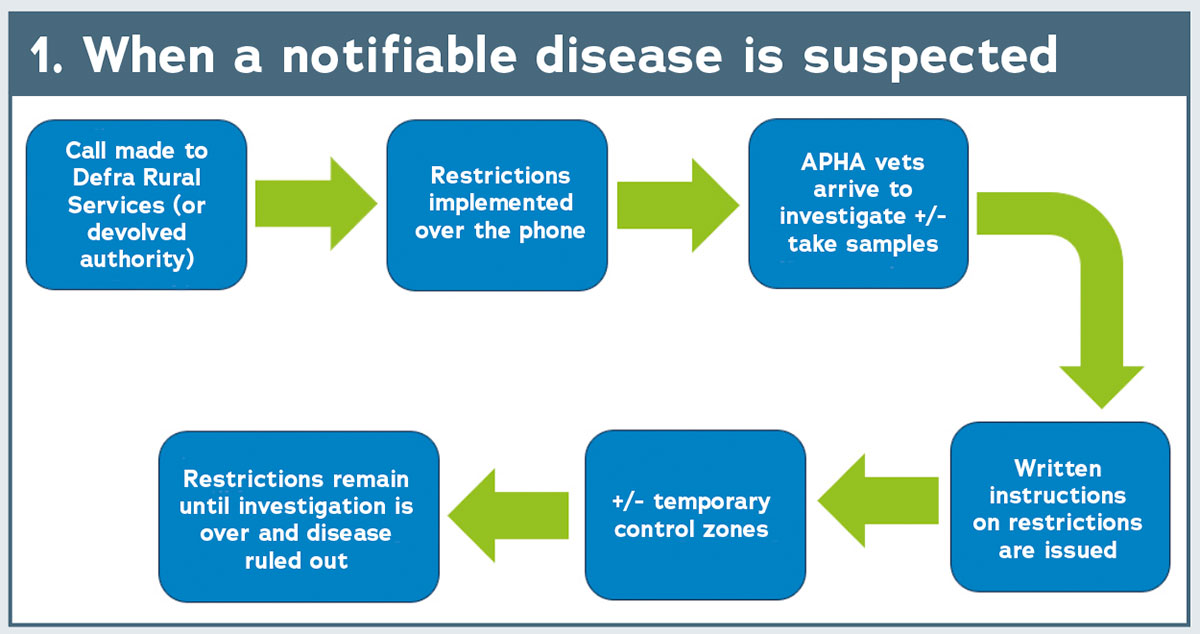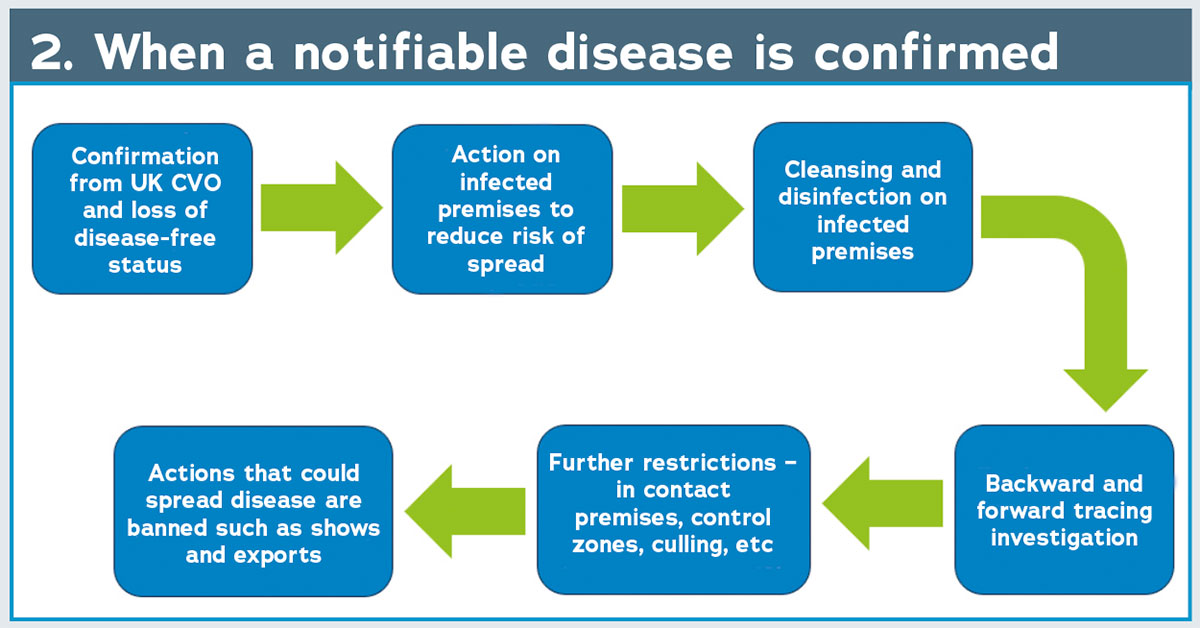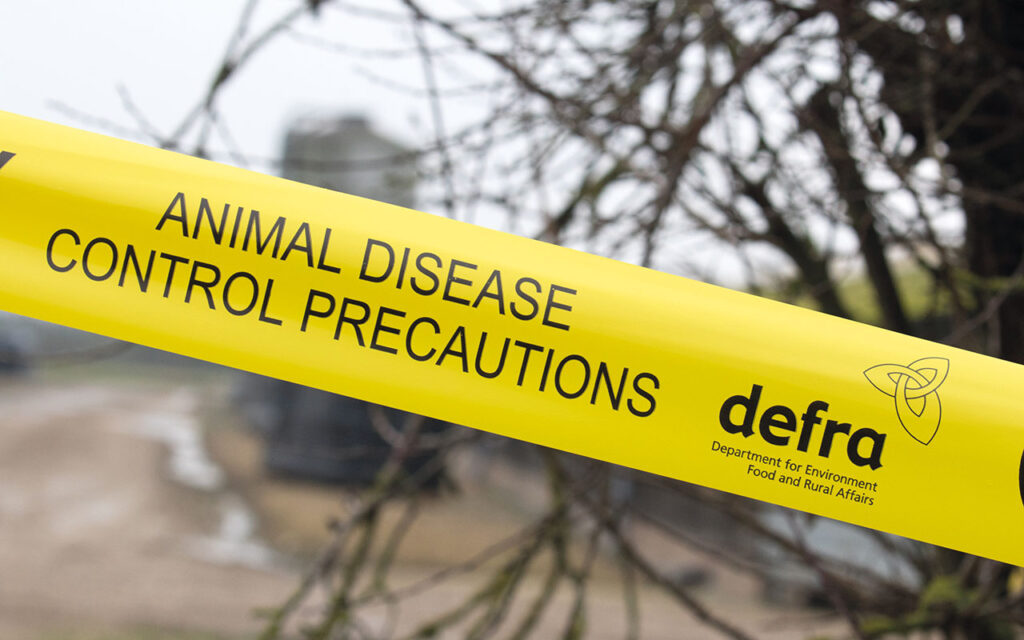 As highlighted in last month’s Pig World, African swine fever (ASF) is present in many countries across Asia and on our doorstep in Europe, as well as in some African countries.
As highlighted in last month’s Pig World, African swine fever (ASF) is present in many countries across Asia and on our doorstep in Europe, as well as in some African countries.
Illegal meat imports, border control failings and travellers bringing home meat products all increase the risk of ASF coming into the UK, if it is not already here.
The big positive to point out, according to Miranda Poulson, AHDB senior animal health and welfare scientist and vet, is that every producer has the power to greatly reduce the risk of ASF getting onto their farm.
“The farm gate is the last line of defence and producers can control who and what comes in and out,” she said.
Layout and available resources are different for every farm, but any changes that can be made to improve protection against ASF are worthwhile.
“Even on outdoor units, where it’s more difficult to keep out wildlife, producers can still minimise the risk,” said NPA chief policy adviser Katie Jarvis. “Every producer needs to focus on doing the best they can in their particular situation.”
Strict biosecurity has been shown to make all the difference during ASF outbreaks in other countries – there are many examples of farms that have managed to keep the disease out, despite being surrounded by farms with confirmed cases.
UK abattoirs are also working to ensure they have the biosecurity measures in place to operate as normal in the event of an ASF outbreak, with a number already pre-designated to do this by Defra.
Contingency plan checklist
The NPA and AHDB have produced a contingency plan template to help producers with the process and to document their plan, which should include:
- Farm location
- Farm contacts and phone numbers
- A map of the unit
- Details of each building, field and capacity
- Access biosecurity protocols
- Temporary additional pig accommodation
- Extra storage for feed and straw
- Storage and muck and slurry removal
- Staff induction and training
- Consideration of emotional impact
- Impact on family life and other enterprises.
1. What to do if you suspect ASF
Because ASF is a notifiable disease, it must be reported to government authorities by phone, even if you only suspect it in your herd, Dr Poulson stressed. Anyone can report the virus, but the most likely chain of events would be that a producer calls their vet, who would then report the suspicion of ASF to APHA.
- In England, if you suspect a notifiable disease in your animals, you must report it immediately by calling the Defra Rural Services Helpline on 03000 200 301.
- In Wales, call 0300 303 8268.
- In Scotland, contact your local Field Services Office.
Failure to do so is an offence.
Figure 1 shows the process that begins once the call is made to report suspected ASF, including immediate restrictions put in place on the farm during that phone conversation, with many of the actions happening simultaneously.

APHA vets would typically aim to dispatch a vet to you within 30 minutes of receiving the initial phone call to investigate and take samples, if necessary, although response times can vary, particularly in the event of a large outbreak.
Movement restrictions would apply not only to movement of pigs on and off site, but would also include:
- People
- Germinal products – for example, semen from boar studs
- Feed
- Slurry and manure
- Meat.
For example, from the first phone call reporting a suspected case, Defra will explain that no one must leave the farm. APHA would then issue licenses for any permitted movements once they arrive on farm.
These restrictions remain in place until the investigation and test results show that ASF has been ruled out. The timescales for this will vary on a case-by-case basis.
2. When ASF is confirmed
If the investigation confirms that ASF is present, there is official confirmation from the UK chief veterinary officer and all exports of pigs, pork and pork products are stopped, with the loss of the country’s disease-free status.
The APHA team immediately goes into action on the infected premises to reduce the risk of spread, including culling all animals, cleaning and disinfection, and tracing of vehicles, animals and people on and off the farm, as shown in figure 2.

Further restrictions, control zones and plans for culling are put in place. There are two types of control zone:
- A protection zone that extends at least 3km around a confirmed infected premises. It is the highest-risk zone, with stringent movement restrictions to contain the disease
- A surveillance zone that extends at least 10km around an infected premises, to monitor for further signs of disease, with some movement restrictions.
“Control zones will generally stay in place for a minimum of 40 days. But more realistically, they will remain in place until the entire herd is culled, and two rounds of cleaning and disinfection have been completed, while all tracing also needs to be completed. Therefore, restriction zones can – and certainly do with other diseases like avian influenza – last months,” Ms Jarvis said.
If a new infected premises is identified, the same zones will be put in place and anyone falling into the overlap in those zones will essentially be reset to zero days.
Every pig business needs to start thinking through how they would manage in the event of an ASF – or foot-and-mouth disease (FMD) – outbreak, during a period of disruption, which could last weeks.
“It’s arguably more important to focus on how you would cope in a control zone, because you will have more control over your actions and premises and it’s actually significantly more likely for your business,” Dr Poulson added.
Compensation
The legislation dictates that producers on infected premises will receive compensation worth 50% of market value for sick animals and 100% for healthy animals culled on APHA orders.
However, if you have to cull for welfare reasons, there is no compensation, and there is no compensation for any mortality before the disease is suspected.
Furthermore, compensation is not paid to any farms that experience losses as a result of being in a control zone.
Clinical signs and spread of ASF
Everyone in the sector needs to ensure they are familiar with the clinical signs of ASF, from those working on farms and in abattoirs to supply companies and hauliers – it is an essential part of preparations to detect the disease early and help prevent its spread if it arrives in the UK.
It is important for everyone to keep ASF in mind as a potential cause, whenever they are assessing pig health issues.
“Identification of the disease is not always straightforward, as the signs can vary from case to case,” said AHDB’s Miranda Poulson. “While some cases will show signs of ASF that can be quickly identified, quite often infected pigs will not show any specific characteristics of the disease.”
For example, there might be a bit of lethargy or diarrhoea, or one dead pig, all possible signs of other problems or diseases.

There is a link to photos of pigs displaying various clinical signs in Defra’s online guidance on how to spot and report the disease, which notes that the signs of ASF are very similar to those of classical swine fever.
The main signs of ASF are: fever, depression, recumbency, loss of appetite, lack of energy and sudden death, with few signs beforehand. Other signs can include:
- Red or dark skin, particularly on the ears and snout
- Discharges from the eyes and nose
- Laboured breathing and coughing
- Vomiting
- Diarrhoea
- Abortion in pregnant sows
- Weakness
- Unsteady gait.
Pigs infected with mild strains of ASF may not become ill or show clinical signs, while severe strains are generally fatal.
ASF can be spread when a pig has direct contact with an infected pig, faeces or bodily fluids, or with people, clothing, vehicles and equipment contaminated with the virus.
It can also be spread if a pig eats infected meat products, which is why no pork products of any origin must be brought onto a pig unit – not even into the staff room.
3. What you can do today
Every pig producer can begin preparing now to ensure they are in as robust a position as possible should ASF arrive in the UK – bearing in mind that it is only spread when pigs actually come into contact with the virus and not through airborne transmission.
Any additional biosecurity measures put in place will also help to protect against FMD and many endemic pig diseases.
Every farm is different, so contingency plans for coping with a notifiable disease outbreak have to be farm-specific. Preparations should include understanding government requirements and being ready to deal with the impact of movement restrictions. The key areas to focus on are:
APHA requirements
- Make sure you understand what a disease investigation entails and have key information to hand to give to APHA, including visitor and pig movement records, herd mortality records and any pathology reports.
- Familiarise yourself with the legally required biosecurity measures and movement restrictions in the control zones put in place during an outbreak.
Digital records
- Make sure all record-keeping is thorough and consistent.
- Keep records digitally wherever possible, so they can quickly be provided to APHA.
- A QR code can be provided to visitors to scan with their phone, linking to an online version of a visitor book where they can complete details before entering the unit.
Farm entry points
- You should minimise the number of entry and exit points. Enforce strict biosecurity protocols at all entrances to the unit, as the risk posed by vehicles, stockpeople and visitors shouldn’t be underestimated.
- Ensure pressure washers and water for cleaning and disinfection points can be installed at all entry points – this is a legal requirement in a control zone. Ideally, put them in place now and use them routinely. Entry and exit points should have hardstanding for pressure washing.
- Invest in plenty of wellington boots for the farm and ensure everyone changes into them before entering, as disinfectant foot dips may not always be at the correct dilution or refreshed often enough.
- Keep gates closed to help ensure everyone stops and follows biosecurity protocols.
Divide farm into zones
- Divide the farm into smaller areas to create ‘biosecure zones’ using a farm plan or aerial photo to map them out, separating out the pig buildings, farmhouse and feed storage areas, for example.
- This helps minimise the number of people going near the pigs.
Temporary pig housing
- Plan in advance how you could create additional temporary housing for pigs, if your unit was under movement restrictions.
- Work out how long it would be before existing accommodation became unsuitable for the size of pigs.
- Consider whether there is land available, along with enough feeders, water pipes and bales to build temporary housing.
Farm staff and vets
- Producers must work with the farm vet on contingency planning and share it with all farm staff, including during new starter inductions.
- It is a ‘living’ plan that needs to be regularly reviewed and updated when necessary.
- Vet practices are working with AHDB, NPA and Livetec Systems, running a series of practical workshops to help producers put together their own bespoke contingency plan.
Further help and information
- Defra guidance on how to spot and report ASF
- NPA and AHDB resources, including a farm contingency plan template and posters for producers and abattoirs
- Ask your vet practice if it is planning a contingency planning workshop.




